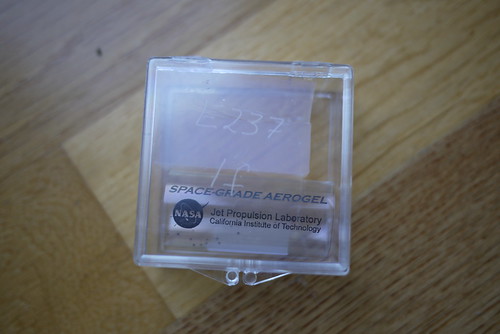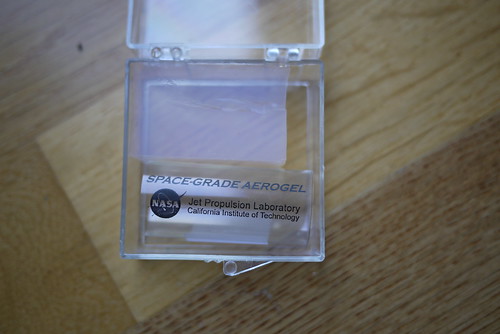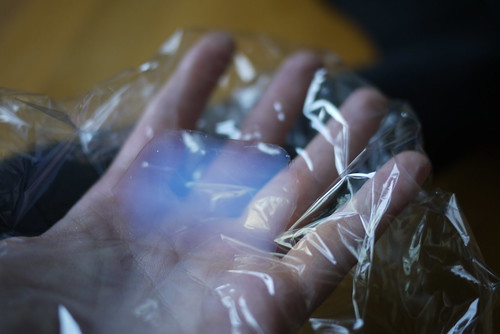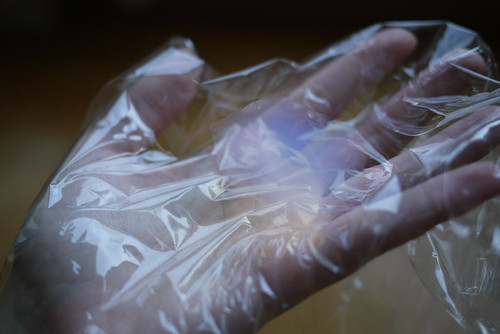Mail delivery from NASA
I just received the most awesome thing in the mail from NASA: a block of aerogel incased in one of the original boxes (see the inscribed number on the box) that held a block of aerogel for NASA's Stardust spacecraft. Aerogel was used in the spacecraft to capture pieces of interstellar dust by impacting a comet. As you can tell from the photographs below, aerogel is not very easy to photograph: it's the lightest solid on Earth: 99.8% of it is made of air. It's also like fiberglass, hence I used plastic wrap to handle it carefully.Jealous? There's actually a way for you to look at pieces of interstellar dust in blocks of aerogel while helping further scientific discoveries at the same time! Stardust@home is a project where anyone can go and collaborate with scientists to find pieces of interstellar dust in images of aerogel - there's simply so much aerogel to go through that it's more than any one person could do in a lifetime. So, I recommend signing up!Update: apparently there's also open source ways to create your own aerogel (though, the materials can be dangerous/cancerous, so please be careful).



